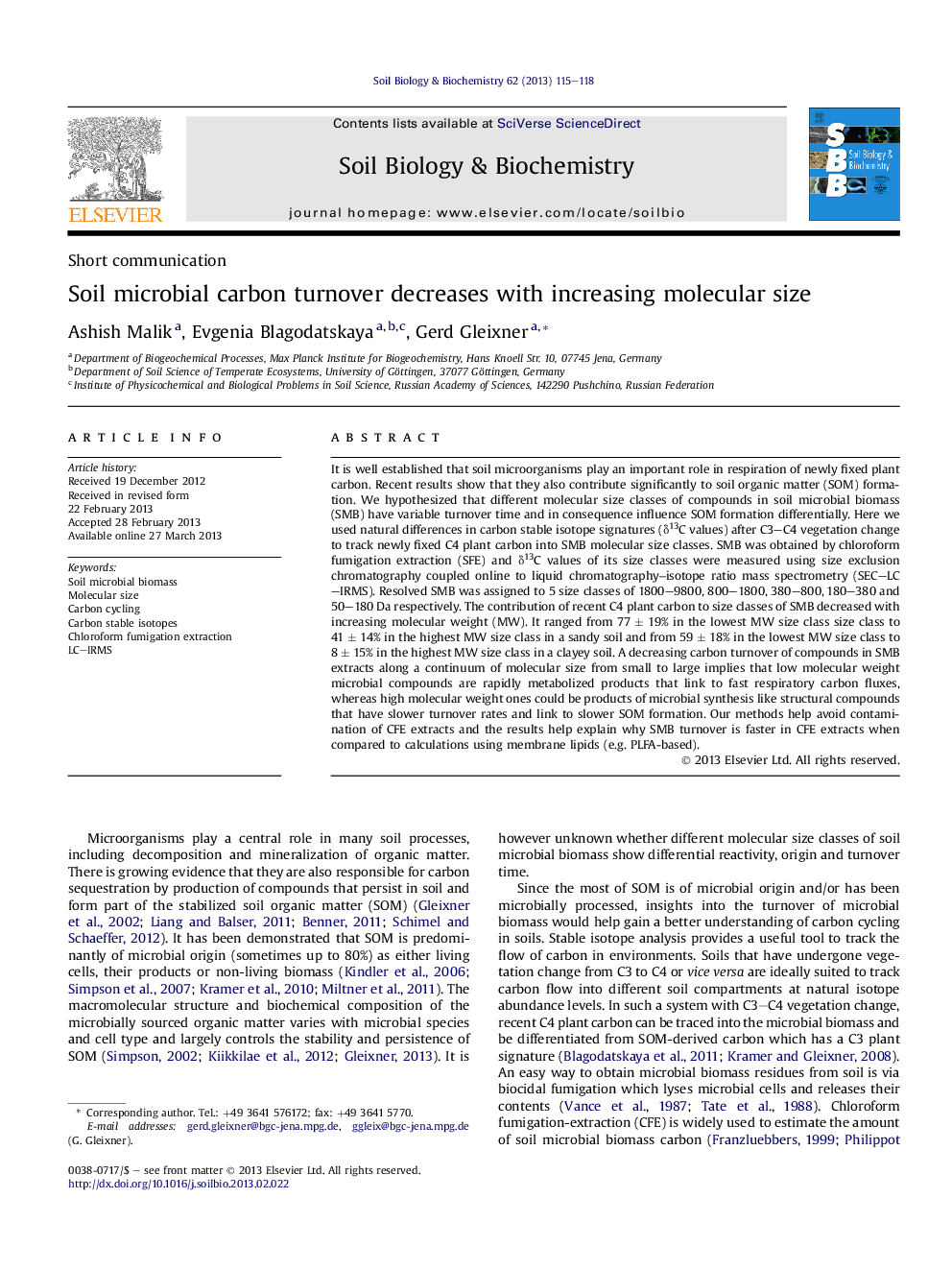| کد مقاله | کد نشریه | سال انتشار | مقاله انگلیسی | نسخه تمام متن |
|---|---|---|---|---|
| 8365247 | 1542622 | 2013 | 4 صفحه PDF | دانلود رایگان |
عنوان انگلیسی مقاله ISI
Soil microbial carbon turnover decreases with increasing molecular size
ترجمه فارسی عنوان
حجم کربن میکروبی خاک با افزایش اندازه مولکولی کاهش می یابد
دانلود مقاله + سفارش ترجمه
دانلود مقاله ISI انگلیسی
رایگان برای ایرانیان
کلمات کلیدی
موضوعات مرتبط
علوم زیستی و بیوفناوری
علوم کشاورزی و بیولوژیک
دانش خاک شناسی
چکیده انگلیسی
It is well established that soil microorganisms play an important role in respiration of newly fixed plant carbon. Recent results show that they also contribute significantly to soil organic matter (SOM) formation. We hypothesized that different molecular size classes of compounds in soil microbial biomass (SMB) have variable turnover time and in consequence influence SOM formation differentially. Here we used natural differences in carbon stable isotope signatures (δ13C values) after C3-C4 vegetation change to track newly fixed C4 plant carbon into SMB molecular size classes. SMB was obtained by chloroform fumigation extraction (SFE) and δ13C values of its size classes were measured using size exclusion chromatography coupled online to liquid chromatographyâisotope ratio mass spectrometry (SEC-LC-IRMS). Resolved SMB was assigned to 5 size classes of 1800-9800, 800-1800, 380-800, 180-380 and 50-180 Da respectively. The contribution of recent C4 plant carbon to size classes of SMB decreased with increasing molecular weight (MW). It ranged from 77 ± 19% in the lowest MW size class size class to 41 ± 14% in the highest MW size class in a sandy soil and from 59 ± 18% in the lowest MW size class to 8 ± 15% in the highest MW size class in a clayey soil. A decreasing carbon turnover of compounds in SMB extracts along a continuum of molecular size from small to large implies that low molecular weight microbial compounds are rapidly metabolized products that link to fast respiratory carbon fluxes, whereas high molecular weight ones could be products of microbial synthesis like structural compounds that have slower turnover rates and link to slower SOM formation. Our methods help avoid contamination of CFE extracts and the results help explain why SMB turnover is faster in CFE extracts when compared to calculations using membrane lipids (e.g. PLFA-based).
ناشر
Database: Elsevier - ScienceDirect (ساینس دایرکت)
Journal: Soil Biology and Biochemistry - Volume 62, July 2013, Pages 115-118
Journal: Soil Biology and Biochemistry - Volume 62, July 2013, Pages 115-118
نویسندگان
Ashish Malik, Evgenia Blagodatskaya, Gerd Gleixner,
